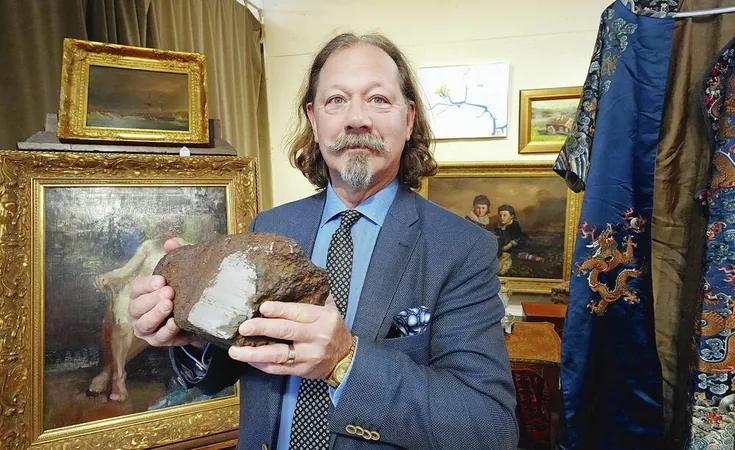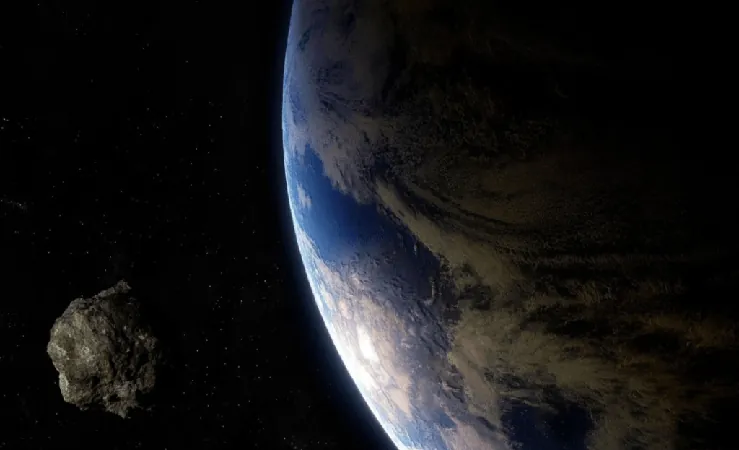
Unveiling the Secrets of Biocrusts: Scientists Race Against Time to Save Earth’s Protective Layer
2024-11-18
Author: Noah
Introduction
Under the scorching embrace of the Utah sun, ecologist Sasha Reed is cultivating more than just plants; she’s nurturing the intricate web of life known as cryptobiotic soil, or biocrust. Contrary to its appearance, which may look like a barren patch of dirt, this fascinating ecosystem is teeming with microscopic bacteria, lichen, and fungi that play a crucial role in maintaining the health of arid landscapes.
The Importance of Biocrusts
Biocrusts are essential to the Earth’s dryland ecosystems, acting as a protective layer that helps to consolidate soil, prevent erosion, retain moisture, and enhance nutrient availability, particularly nitrogen. These remarkable soil communities cover approximately 12% of Earth's terrestrial regions and are found on every continent, serving as nature's living skin.
Threats to Biocrusts
But tread lightly! While biocrusts may look like inviting crunchy terrain, trampling them can have dire consequences. These vital ecosystems can take decades to regenerate, and their decline has been exacerbated by the growing impacts of climate change, making the efforts to study and restore them more urgent than ever.
Anita Antoninka, a plant and soil ecologist at Northern Arizona University, describes the current situation as both busy and thrilling: 'We’re kind of inventing how to do this.' Biocrusts are particularly vulnerable due to their sensitivity to temperature fluctuations and changes in precipitation, with estimates predicting a staggering loss of 25% to 40% of their coverage over the next 65 years if warming trends continue.
Composition and Structure of Biocrusts
The biocrusts are comprised largely of cyanobacteria, which help create a stable surface for other organisms to thrive. Their structures vary dramatically depending on environmental conditions—some may be dominated by mosses, while others might host a rich variety of lichens. Each biocrust serves as a protective armor, critical for maintaining soil integrity.
Research and Restoration Efforts
Research in this area is burgeoning, with scientists like Ferran Garcia-Pichel from Arizona State University highlighting significant progress made over two decades in understanding these complex ecosystems. However, many questions remain unanswered, and the need to innovate restoration strategies is pressing.
In an attempt to combat the degradation of biocrusts, Reed and her team at what is potentially the largest outdoor biocrust nursery in the world are testing various restoration techniques. Initial successes occurred in controlled greenhouse conditions, but when transplanted outdoors, these biocrusts often struggled. To address this, the researchers are now working to grow these communities under more authentic environmental conditions to better prepare them for survival in natural settings.
Innovative Techniques for Restoration
Innovative methods inspired by traditional sod techniques are also being explored. By growing biocrusts on weed cloth and then transferring them intact to restoration sites, the scientists have found promising results. This could lead to practical applications for restoring damaged areas, particularly where land disturbance is anticipated.
Resilience Against Climate Change
As they continue their research, Reed and her colleagues are also investigating which strains of biocrust organisms are more resilient in the face of climate change. They are collecting samples from hotter, drier regions to see how these variants perform under controlled conditions, providing pivotal insights into which biocrust communities will be best suited for future landscapes.
Collaboration and Community Involvement
Collaboration is key in these efforts, with Reed working alongside various land management organizations to incorporate biocrust restoration procedures into larger environmental strategies. Additionally, raising public awareness and prompting individuals to take action can aid conservation efforts; simply staying on designated trails when exploring arid regions can prevent damage to these fragile ecosystems.
Conclusion
'Get down on hands and knees and just take a look,' Reed encourages. The biocrusts deserve our attention—not only for their ecological significance but also for their astonishing beauty. The fight to preserve Earth’s living skin is more critical than ever, as scientists race against time to protect these unsung heroes of the desert ecosystem.
As the climate continues to change, every effort counts in securing the future of these vital habitats and the myriad forms of life they support. Are you ready to join the fight and uncover the hidden wonders beneath your feet?









 Brasil (PT)
Brasil (PT)
 Canada (EN)
Canada (EN)
 Chile (ES)
Chile (ES)
 España (ES)
España (ES)
 France (FR)
France (FR)
 Hong Kong (EN)
Hong Kong (EN)
 Italia (IT)
Italia (IT)
 日本 (JA)
日本 (JA)
 Magyarország (HU)
Magyarország (HU)
 Norge (NO)
Norge (NO)
 Polska (PL)
Polska (PL)
 Schweiz (DE)
Schweiz (DE)
 Singapore (EN)
Singapore (EN)
 Sverige (SV)
Sverige (SV)
 Suomi (FI)
Suomi (FI)
 Türkiye (TR)
Türkiye (TR)